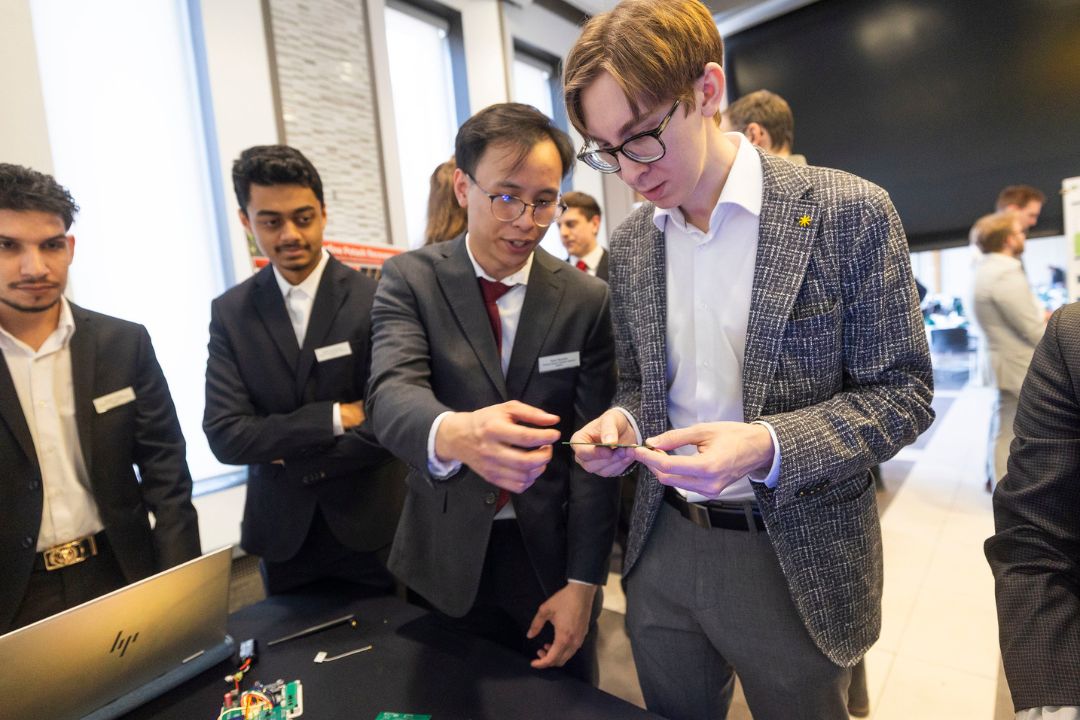
Capstone Design Showcase highlights student innovation and real-world impact
From a hospital patient repositing device, mine design, and environmental flood control to wireless paintball systems, the 2025 Capstone Design Showcase highlights the future of engineers the world needs.
By Engineering CommunicationsThe University of Saskatchewan (USask) College of Engineering recently hosted the annual Capstone Design Showcase, where the top 13 student capstone teams presented their final-year engineering projects to industry leaders, alumni, faculty, and the public.

The showcase is the culmination of the college’s capstone design courses, which challenge students to apply their technical knowledge, creativity, and teamwork skills to solve real-world engineering problems. Working alongside industry partners and faculty mentors, students tackle projects that range from mechanical designs to complex software solutions and cutting-edge sustainability initiatives.
Capstone projects provide students with the opportunity to develop practical solutions with real-world applications. Many past projects have led to further development, commercialization, or employment opportunities for participating students.
The Capstone Design Showcase continues to demonstrate the ingenuity and problem-solving abilities of USask Engineering students. By taking on complex challenges and developing solutions with real-world applications, students showcase their readiness to become the engineers the world needs.
Photographs of the evening can be viewed on the USask Engineering Flickr: https://flic.kr/s/aHBqjC73SP
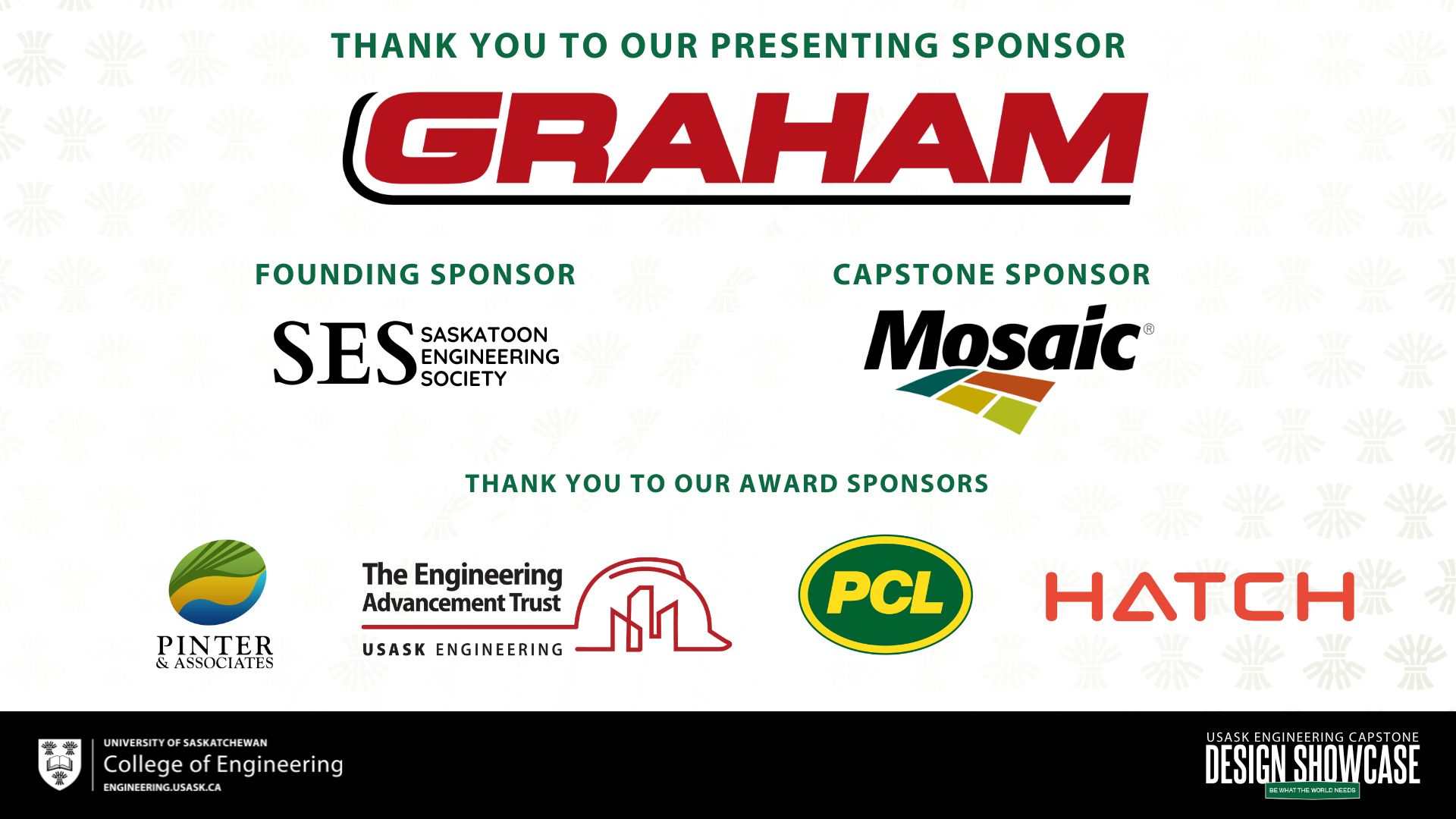
USask Engineering thanks the judges and the event and award sponsors whose support is critical in making the Capstone Design Showcase a reality.
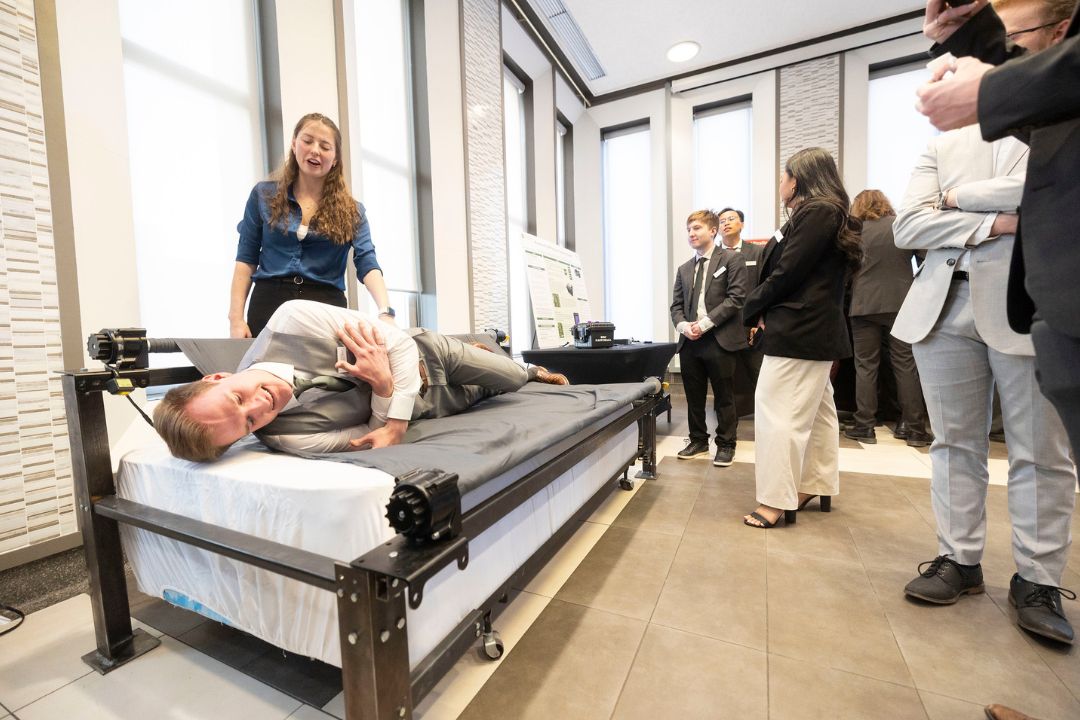
The Top 13 Capstone Design Teams
The 13 groups are chosen from allocations across the eight engineering disciplines. Faculty and peers select each winning team during the discipline capstone design showcase nights to move forward to the Capstone Design Showcase.
Mechanical Engineering: Design of Vortex Generators for a Thrush S2R-T660 Aircraft
- Christopher Hansen, Ruchir Sharma, Ethan Sterkenburg, and Jalpan Talati
Mechanical Engineering: Railcar Axle Body Cleaning Station
- Renick Kreger, Paul Haugen, Josh McDonald, and Brett Stangeland
Mechanical Engineering: Dow Polyethylene Pellet Spreader
- Kalyn Houcher, Taylor Hoppe, Mark Meyer, and Connor Stevens
Civil Engineering: Geotechnical Foundation Design for SMR
- Carter Fee, Drayden Kolbeck, JC Tinio, and Ryan Newton
Civil Engineering: Overpass Replacement Highway 2 over Highway 1
- Ashley Dasiuk, Angela Hoffman, Ethan Wandzura, Zurin Bebillo, and Nicholas Zemluk
Geological Engineering: Porky West Mine Design
- Jade Saunders, Jordan Cemulini, John Paulo Santos, Jamie Anaka, and Justin Syrenne
Environmental Engineering: Whistle Bend Outfall Project
- Kolby Eberle, Jordan Jurke, Eveline Marshall, and Jessica Tomashewski
Electrical Engineering: Smart Solar Power Bank
- S Austin Bowes, Ashlin Malik, Blake Davis, and Vincent Oliver
Computer Engineering: Wireless Airsoft/ Paintball Objective System
- Sean Bautista, Shafin Mohammed, Ibrahim Touqani, and Graham Zelinski
Chemical Engineering: Transforming Waste Heat Into Savings: Optimizing Lime Slaking at Key Lake Mill
- Eric Swedlo, Julia Leng, and Michael Mitchell
Chemical Engineering: Ultrafine Potash Recovery
- Brayden Lehtonen, Christopher Matthews, and James Monteith
Engineering Physics: Control for the Canadian Light Source REIXS Beamline
- Quinn Leakos, Emma Paulson, Reid Fairburn, and Liam Newman
General Engineering: Patient Repositioning Device by SafeShift Healthcare Solutions
- Sierra Stephenson, Layne Ransom, Rhys Rybchuk, and Arliss Sidloski
Winners of the 2025 Capstone Design Showcase
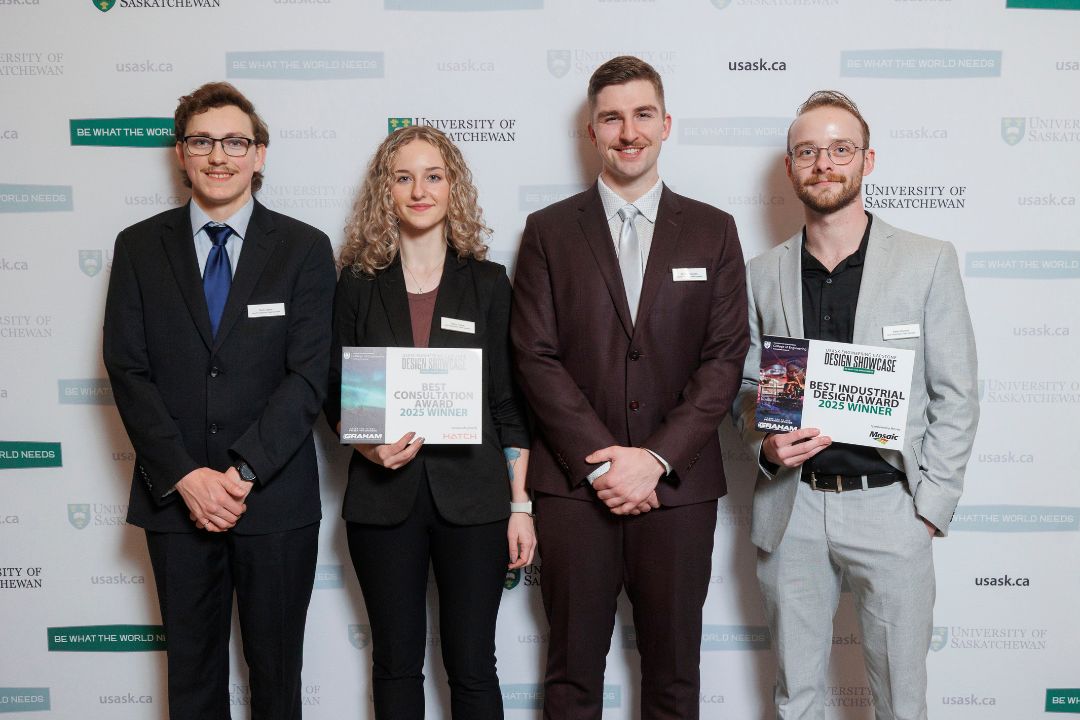
Best Industry Award presented by Mosaic
These awards will go to the top two capstone groups that developed a large-scale industrial design and scored on technical merit, persuasiveness of the design, potential impact and innovation.
- Winner ($1,000): Dow Polyethylene Pellet Spreader, presented by mechanical engineering students Kalyn Houcher, Taylor Hoppe, Mark Meyer, and Connor Stevens
- Runner-up ($500): Railcar Axle Body Cleaning Station, presented by mechanical engineering students Renick Kreger, Paul Haugen, Josh McDonald, and Brett Stangeland.
Best Consulting Award presented by Hatch
This award will go to the group that worked collaboratively with clients and other stakeholders throughout the design process. In this context, a collaborative design process involves consulting with all relevant stakeholders to develop a deep understanding of the problem (including any relevant social, cultural, environmental, or economic considerations), then working with the stakeholders to identify, evaluate, and implement solutions that address the problem holistically.
- Winner ($1,000): Dow Polyethylene Pellet Spreader, presented by mechanical engineering students Kalyn Houcher, Taylor Hoppe, Mark Meyer, and Connor Stevens.
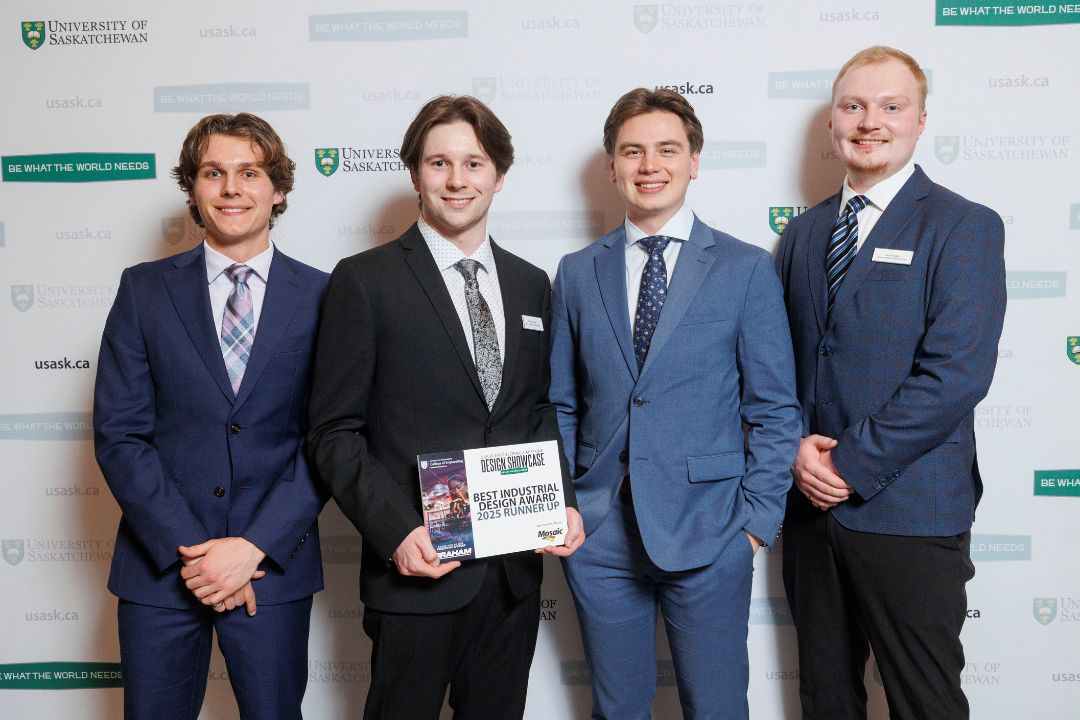
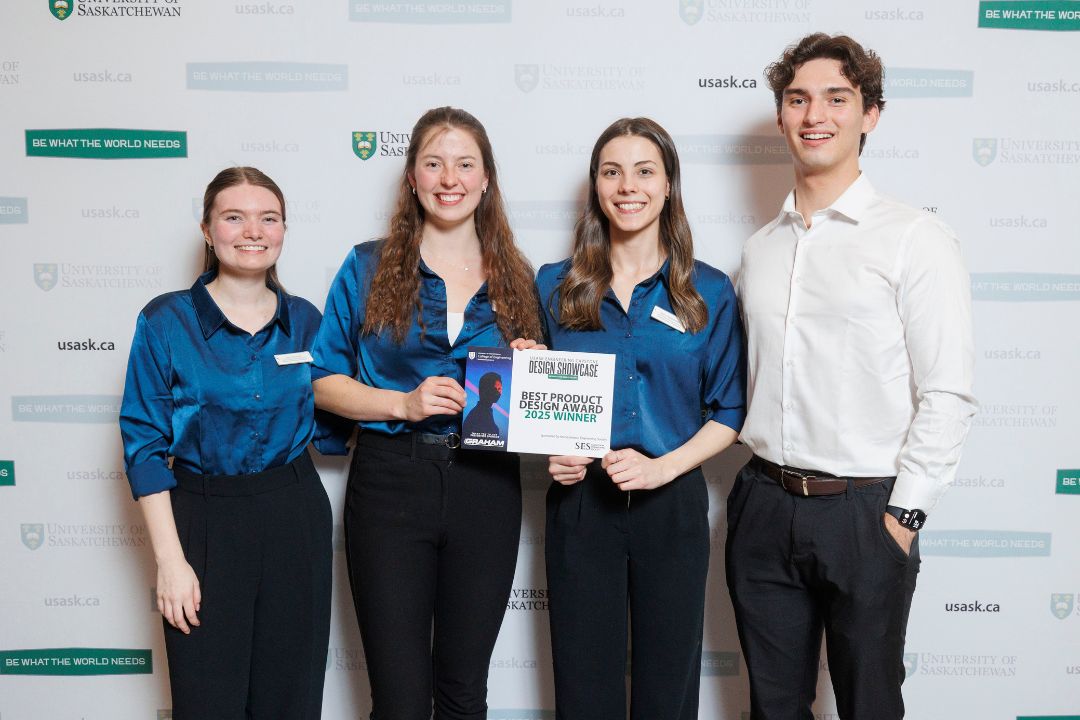
Best Product Award presented by the Saskatoon Engineering Society
These awards will go to the top two capstone groups that developed a product design and scored on technical merit, persuasiveness of the design, potential impact and innovation.
- Winner ($1,000): Patient Repositioning Device by SafeShift Healthcare Solutions, presented by USask Engineering students Sierra Stephenson, Layne Ransom, Rhys Rybchuk, and Arliss Sidloski.
- Runner-up ($500): Design of Vortex Generators for Thrush Aircraft S2R-T660, presented by mechanical engineering students Christopher Hansen, Ruchir Sharma, Ethan Sterkenburg, and Jalpan Talati.
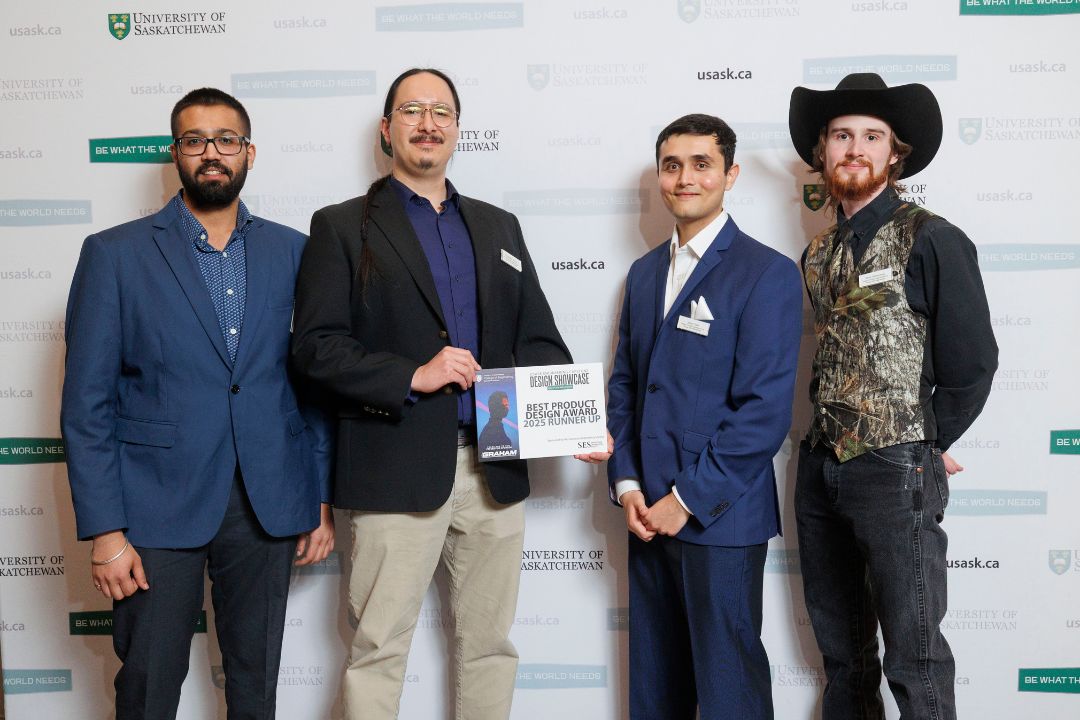
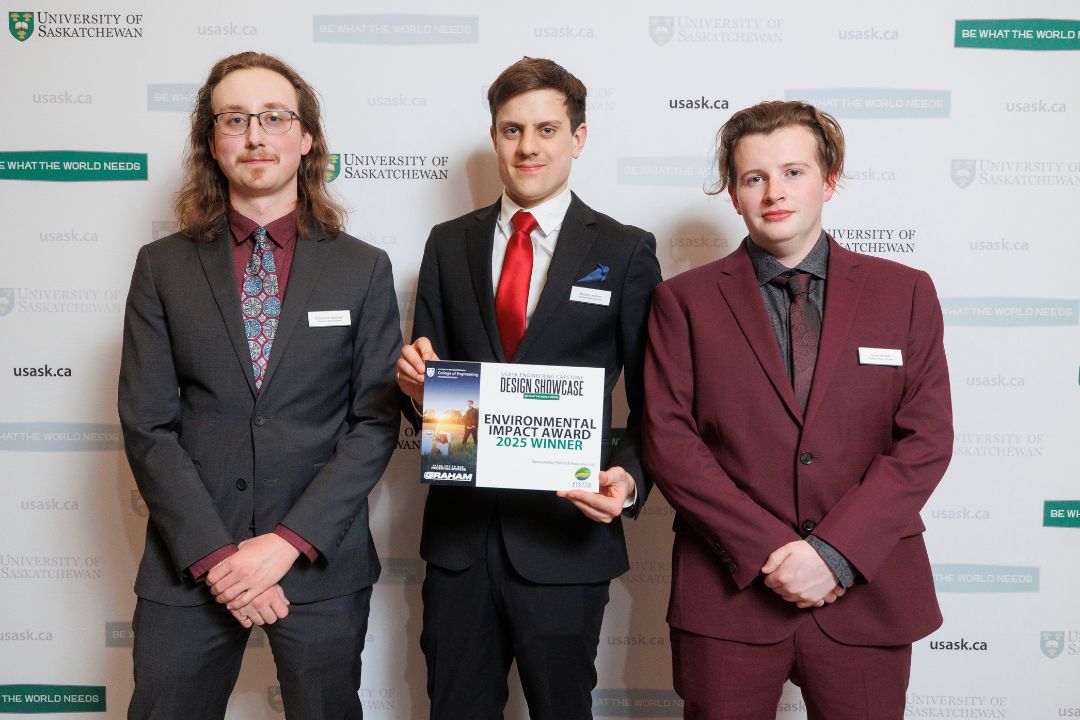
Environmental Impact Award presented by PINTER & Associates
This award will go to the group with the design that the judges feel is most capable of having the most positive environmental impact and the ability to help preserve, the certainty of impact, and/or remediate the natural environment.
- Winner ($1,000): Ultrafine Potash Recovery, presented by chemical engineering students Brayden Lehtonen, Christopher Matthews, and James Monteith.
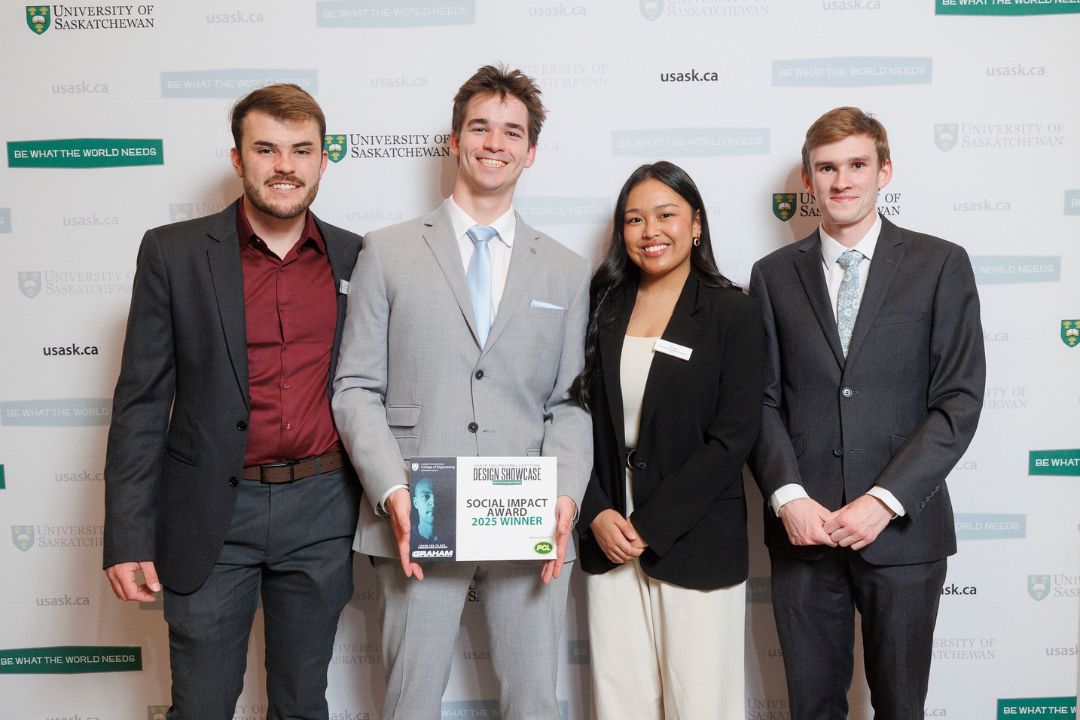
Social Impact Award presented by PCL
This award will go to the group with the design that the judges feel is most capable of having the most positive social impact, the certainty of impact, and the ability to help people.
- Winner ($1,000): Geotechnical Foundation Design for SMR, presented by civil engineering students Carter Fee, Drayden Kolbeck, JC Tinio, and Ryan Newton.
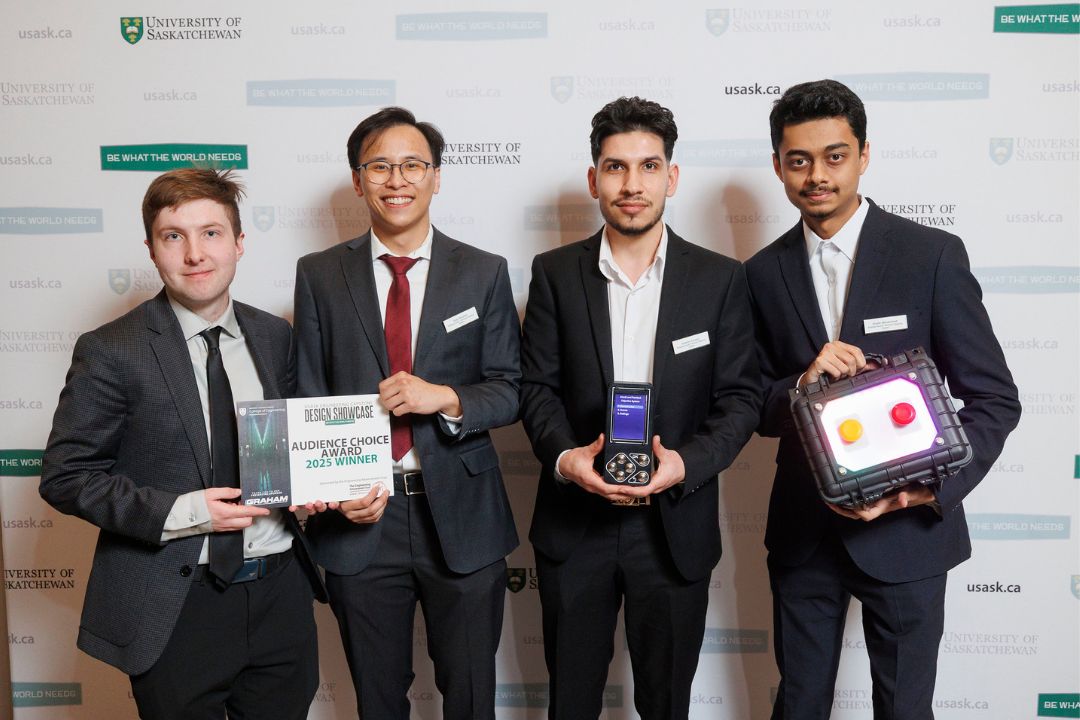
Audience Choice Award presented by the alumni and friends of the Engineering Advancement Trust (EAT)
This award will go to the group that the audience feels is most deserving.
- Winner ($1,000): Wireless Airsoft / Paintball Objective System, presented by computer engineering students Sean Bautista, Shafin Mohammed, Ibrahim Touqani, and Graham Zelinski.
All photographs have been captured by Dave Stobbe Photography (2025).

